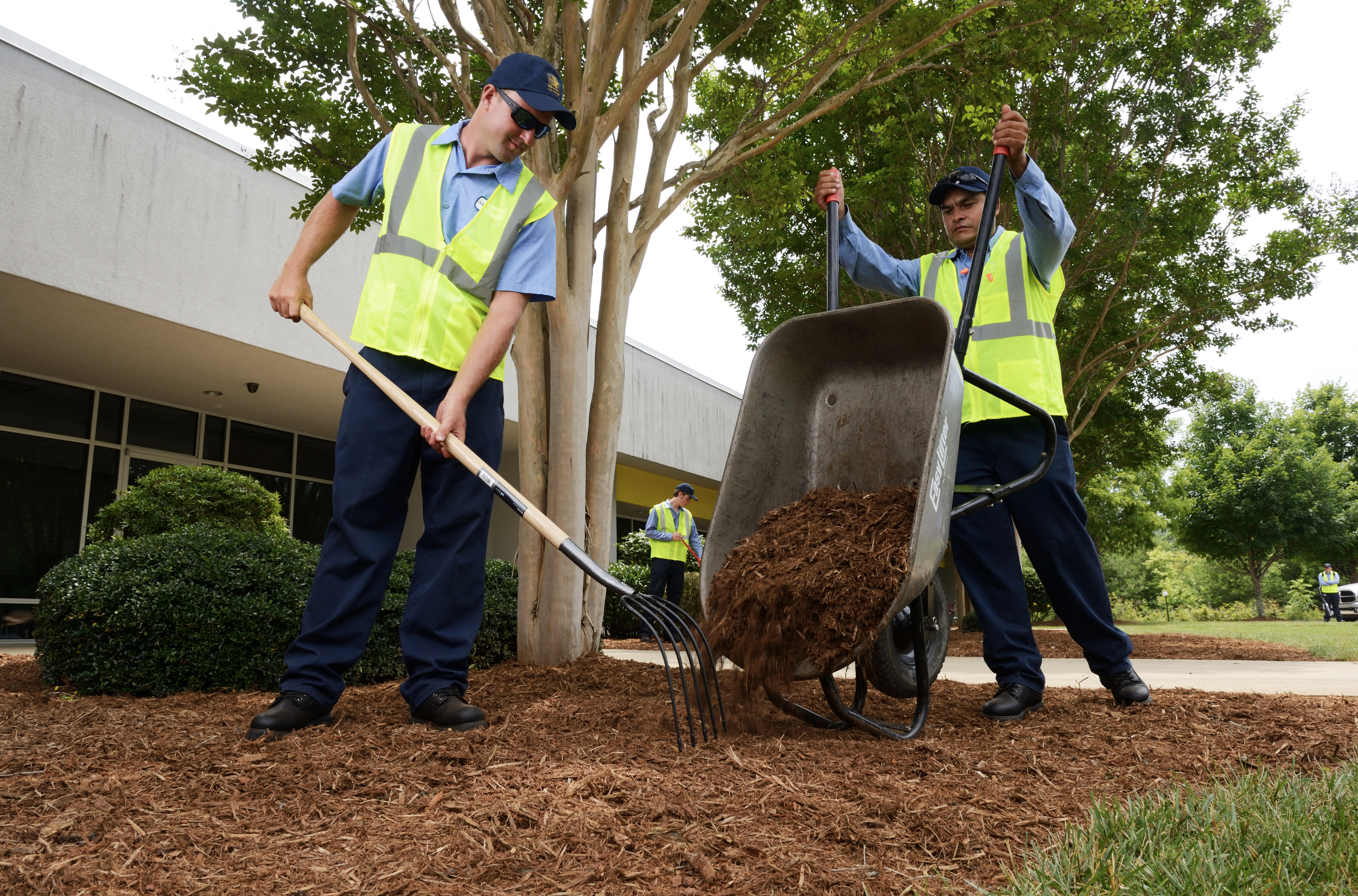There Are Many Advantages To Mulching In The Fall
If you’re committed to the preservation of your softscape, mulching is one of the most important landscape improvements you can include in your fall landscaping plan–even more so than springtime mulching. In fact, the advantages of putting down mulch in the autumn are multiple, so it’s smart to be well informed before you start mulching.
Fall mulching spruces up the winter landscape
Particularly in regions where the autumn leads to winter dormancy, fresh mulch helps spruce up areas where plants, trees and shrubberies have gone dormant.
Mulch protects plants
One of the greatest benefits of adding a fresh layer of mulch in the fall is that it protects plants by insulating the roots from bitter cold temperatures. It’s also useful for minimizing frost heave, which is created by continuously freezing and thawing ground that threatens the wellbeing of your plants by pushing them up out of the safety of the soil.
Organic mulch feeds the soil
Applying mulch in the fall provides essential nourishment to root systems, because decomposing mulch feeds plantings through the winter months and into the spring, resulting in stronger, healthier, longer-lived flora.
Mulch aids with moisture retention
Another valuable quality of mulch is that it helps with moisture retention, which is critical during the wintertime, when strong winds and cold temperatures tend to cause drought conditions. As a matter of fact, the more consistent hydration mulch offers will prevent evergreens from turning brown during the wintertime, which translates to color and beauty on your property all through the seasons–all thanks to fall mulching!
Properly applied mulch controls weeds
When it’s applied properly, mulch eliminates the ability of weeds to germinate and establish roots, which makes mulching in the fall invaluable for controlling weeds during both the fall season as well as the upcoming spring.
Mulching also serves as an effective erosion control measure
In addition to weed control, mulch also forms a protective barrier that prevents the topsoil from eroding due to heavy winter winds, snow and rain.
Mulch supports the essential ecosystem
While we already mentioned how beneficial mulch is for protecting plants from repeating freeze-thaw cycles, mulching also provides nutrients and warmth for earthworms and the precious microbes that enrich the soil with the life-giving nourishment your plants and trees need to flourish, making mulch vital to maintaining a healthy biome for your softscape.
Mulching in the autumn is less taxing
Another good reason to mulch in the fall is that it saves work during the springtime, which has a much longer task list to ensure your landscape is ready for the busy growing season. The added bonus is that it’s far less physically taxing to undertake mulching during the cooler weather, making autumn mulching a winning proposition all round.
Winterize your landscape prior to mulching
So, when in the autumn should you plan to mulch? It’s best to wait until the first freeze so you can make sure your landscape is properly prepared to gain the most out of it; otherwise you’ll end up having to come back and fill in bare spots that appear once all the foliage is gone, perennials have been trimmed back, dead or dying annuals have been dug up, and all the debris has been removed.
Avoid disturbing existing mulch layers when adding fresh mulch
Another important tip when mulching in the fall is that even though it may be tempting to rake and turn the existing mulch before adding a fresh layer, DO NOT DISTURB the existing mulch. Doing so will neatly deposit any weed seeds right where they need to be for easy germination in the springtime, as opposed to leaving them sitting on top of the mulch where they’re unable to get a real foothold in the soil.
Apply mulch the proper thickness and distance away from plantings
It’s also crucial to know that mulch shouldn’t be applied too close to plant stems and the bases of tree trunks, as it can compromise their health and longevity. Mulch also needs to be of the proper thickness, as too much or too little mulch can have an adverse effect on the health of the flora.
Choose the right mulching material for the job
Finally, make sure you’re choosing the right mulch for the job. Some of the different mulches commonly used include:
Wood chips and shredded bark, both of which come in many varieties such as cedar, cypress, oak hardwood, mixed hardwood, and pine, to name a few.
Straw mulch, which is usually made of wheat straw or rice straw, is lightweight and decomposes with ease.
Cocoa hull mulch, which is healthy for the soil and has a delicious aroma.
Pine straw mulch, which acidifies the soil.
Grass clippings, which contain the high nitrogen levels vegetable gardens love.
Nutrient rich, shredded leaves which are a great choice for flower beds.
Avoid synthetic mulching materials such as rubber mulch or red-dyed mulch, that although are both solid solutions for a permanent ground covering, may contain chemicals that would be very damaging to the flora.
Of course, if it seems like your fall mulching project is becoming just a bit more than you want to take on, leave it to your U.S. Lawns mulch experts instead. We’ll take care of all the preparation and get your mulching done right this autumn, while you focus on everything else on your task list. Contact us now so we can get started!

